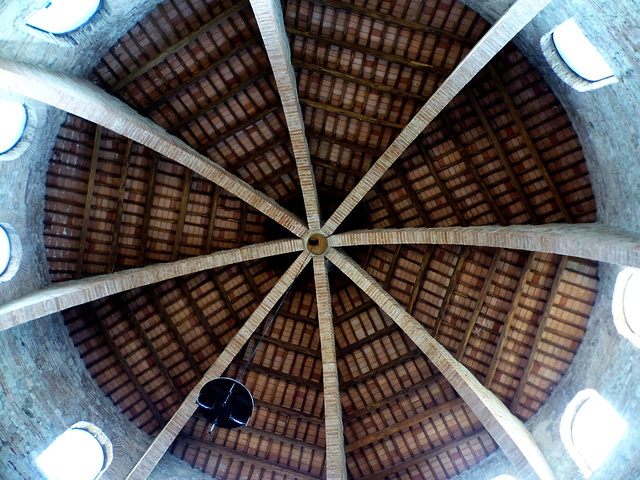Perugia - Saint Giuliana
Perugia - San Domenico
Saint Peter Church.
Tennessee church winter
Inside Saint Peter Church.
Mother Church of Saint Sebastian.
Church of All Saints, aka Jesuit College.
Carlos Machado Museum.
Mother of God Chapel.
Manueline side door.
église Saint-Lubin
Gubbio - San Francesco
Foligno - Cattedrale di San Feliciano
Saint Joseph Church.
Saint Vincent Church outside walls.
Cloister.
View from the upper terrace.
Assisi - Basilica di Santa Chiara
Assisi - Cattedrale di San Rufino
Belfry and a view to southwest.
Auf dem Kirchplatz der Kirche San Giovanni Battist…
Saint Stephen Chapel.
Holy Mary Church, squeezed between buildings.
Perugia - San Michele Arcangelo
San Terenziano - Madonna delle Grazie
Viepri - Abbazia di Santa Maria
Viepri - Abbazia di Santa Maria
Massa Martana - Abbazia dei Santi Fidenzio e Teren…
Todi - Duomo di Todi
Macerino - San Giovenale
Todi - Duomo di Todi
The Priory Church of St Mary and St Blaise
Narni - Sunrise
Pantocrator
Iconostasis
Viterbo - Santa Maria della Salute
Roma - Basilica dei Santi Giovanni e Paolo
Roma - Santa Maria in Cosmedin
Roma - Santa Croce in Gerusalemme
Roma - Santa Maria in Trastevere
Roma - Santa Maria in Trastevere
Roma - St. Peter's Basilica
Dubrovnik - St. Saviour
Dubrovnik - Cathedral
Ort der Stille
Location
See also...
See more...Keywords
Authorizations, license
-
Visible by: Everyone -
All rights reserved
-
162 visits
Perugia - San Michele Arcangelo


Perugia was an Umbrian settlement on top of a mountain that became a Roman colonia around 250 BC. In 547 Totila´s Ostrogoth troops looted the city after a long siege. Legends tell, that Perugia´s bishop Herculanus, who negotiated with Totila in behalf of his folks, got beheaded by the Ostrogoths, making St. Herculanus (aka "Sant' Ercolano") to the city´s patron saint.
In the 9th century, with the consent of the Carolingians, it passed under the popes. Within the 11th century gained independency. After a long conflict, in 1370 the city signed a treaty accepting a papal legate, but already 5 years later the vicar-general of the Papal States was expelled by a popular uprising. During the Italian Wars Perugia passed through many hands until Condottiero Braccio da Montone reached a concordance with the Papacy. It did not bring peace to the city, but led to the "Salt War" in 1540, that had started as a protest against paying new taxes on salt. The papal troops forced a surrender.
Within a few years, more than hundred houses, as well as churches and monasteries were destroyed and used as building material to built an enormous fortress, the "Rocca Paolina". The fort was for centuries a symbol of oppressive papal rule.
-
San Michele Arcangelo is a paleo-Christian circular building, dating to the 5th to 6th century. It is located near the ancient gate "Porta Sant'Angelo" and was probably erected on the foundations of an older temple.
The interior has an ambulatory delimited by sixteen different ancient monolithic columns, that probably were taken from Roman buildings/ruins and got reused here.
Standing under the dome.
In the 9th century, with the consent of the Carolingians, it passed under the popes. Within the 11th century gained independency. After a long conflict, in 1370 the city signed a treaty accepting a papal legate, but already 5 years later the vicar-general of the Papal States was expelled by a popular uprising. During the Italian Wars Perugia passed through many hands until Condottiero Braccio da Montone reached a concordance with the Papacy. It did not bring peace to the city, but led to the "Salt War" in 1540, that had started as a protest against paying new taxes on salt. The papal troops forced a surrender.
Within a few years, more than hundred houses, as well as churches and monasteries were destroyed and used as building material to built an enormous fortress, the "Rocca Paolina". The fort was for centuries a symbol of oppressive papal rule.
-
San Michele Arcangelo is a paleo-Christian circular building, dating to the 5th to 6th century. It is located near the ancient gate "Porta Sant'Angelo" and was probably erected on the foundations of an older temple.
The interior has an ambulatory delimited by sixteen different ancient monolithic columns, that probably were taken from Roman buildings/ruins and got reused here.
Standing under the dome.
- Keyboard shortcuts:
Jump to top
RSS feed- Latest comments - Subscribe to the comment feeds of this photo
- ipernity © 2007-2024
- Help & Contact
|
Club news
|
About ipernity
|
History |
ipernity Club & Prices |
Guide of good conduct
Donate | Group guidelines | Privacy policy | Terms of use | Statutes | In memoria -
Facebook
Twitter

Sign-in to write a comment.